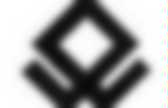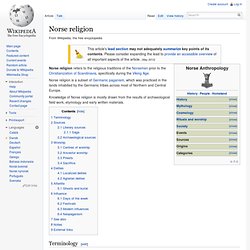

Norse rituals. Norse pagan worship is the traditional religious rituals practiced by Norse pagans in Scandinavia in pre-Christian times.

Norse paganism was a folk religion (as opposed to an organised religion), and its main purpose was the survival and regeneration of society. Therefore, the cult was decentralized and tied to the village and the family, although evidence exists of great national religious festivals. The leaders managed the cult on behalf of society; on a local level, the leader would have been the head of the family, and nationwide, the leader was the king. Pre-Christian Scandinavians had no word for religion in a modern sense. The closest counterpart is the word sidr, meaning custom. Norse religion was at no time homogeneous but was a conglomerate of related customs and beliefs.
It is not certain to what extent the known myths correspond to the religious beliefs of Scandinavians in pre-Christian times, nor how people acted towards them in everyday life. Norse cosmology. The cosmology of Norse mythology has "nine homeworlds", unified by the world tree Yggdrasill.

Mapping the nine worlds escapes precision because the Poetic Edda often alludes vaguely. The Norse creation myth tells how everything came into existence in the gap between fire and ice, and how the gods shaped the homeworld of humans. Yggdrasill[edit] A cosmic ash tree, Yggdrasill, lies at the center of the Norse cosmos. Norse mythology. An undead völva, a Scandinavian seeress, tells the spear-wielding god Odin of what has been and what will be in Odin and the Völva by Lorenz Frølich (1895) For the practices and social institutions of the Norse pagans, see Norse paganism Norse mythology, or Scandinavian mythology, is the body of mythology of the North Germanic people stemming from Norse paganism and continuing after the Christianization of Scandinavia and into the Scandinavian folklore of the modern period.

The northernmost extension of Germanic mythology, Norse mythology consists of tales of various deities, beings, and heroes derived from numerous sources from both before and after the pagan period, including medieval manuscripts, archaeological representations, and folk tradition. Most of the surviving mythology centers on the plights of the gods and their interaction with various other beings, such as humanity and the jötnar, beings who may be friends, lovers, foes and/or family members of the gods.
Sources[edit] Norse paganism. Norse religion refers to the religious traditions of the Norsemen prior to the Christianization of Scandinavia, specifically during the Viking Age.

Norse religion is a subset of Germanic paganism, which was practiced in the lands inhabited by the Germanic tribes across most of Northern and Central Europe. Knowledge of Norse religion is mostly drawn from the results of archaeological field work, etymology and early written materials. Terminology[edit] Mjölnir pendants were worn by Norse pagans during the 9th to 10th centuries. This Mjolnir pendant was found at Bredsätra in Öland, Sweden.
Norse religion was a cultural phenomenon, and — like most pre-literate folk beliefs — the practitioners probably did not have a name for their religion until they came into contact with outsiders or competitors. Sources[edit] Knowledge about Norse religion has been gathered from archaeological discoveries and from literature produced after the Christianization of Scandinavia.[2] Literary sources[edit]